#marshall space flight center
Text

"Core Stage for Artemis II Rocket Moved to Pegasus Barge for Departure to Kennedy Space Center
This image shows team members moving the first core stage that will help launch the first crewed flight of NASA’s SLS (Space Launch System) rocket for the agency’s Artemis II mission. The move marked the first time a fully assembled Moon rocket stage for a crewed mission has rolled out from NASA’s Michoud Assembly Facility in New Orleans since the Apollo Program.
The core stage was moved onto the agency’s Pegasus barge, where it will be ferried to NASA’s Kennedy Space Center in Florida.
The core stage for the SLS mega rocket is the largest stage NASA has ever produced. At 212 feet tall, the stage consists of five major elements, including two huge propellant tanks that collectively hold more than 733,000 gallons of super chilled liquid propellant to feed four RS-25 engines at its base. During launch and flight, the stage will operate for just over eight minutes, producing more than 2 million pounds of thrust to help send a crew of four astronauts inside NASA’s Orion spacecraft onward to the Moon.
NASA is working to land the first woman, first person of color, and its first international partner astronaut on the Moon under Artemis. SLS is part of NASA’s backbone for deep space exploration, along with the Orion spacecraft and Gateway in orbit around the Moon and commercial human landing systems, next-generation space, next-generational spacesuits, and rovers on the lunar surface. SLS is the only rocket that can send Orion, astronauts, and supplies to the Moon in a single launch."
Credit: NASA
Date: July 16, 2024
Posted on Flickr by NASA's Marshall Space Flight Center: link
#Artemis 2#Artemis II#Space Launch System#SLS#Rocket#Artemis program#NASA#Marshall Space Flight Center#MSFC#Huntsville#Alabama#July#2024#my post
69 notes
·
View notes
Video
Hubble Uncovers a Celestial Fossil by NASA's Marshall Space Flight Center
Via Flickr:
This densely populated group of stars is the globular cluster NGC 1841, which is part of the Large Magellanic Cloud (LMC), a satellite galaxy of our Milky Way galaxy that lies about 162,000 light-years away. Satellite galaxies are bound by gravity in orbits around a more massive host galaxy. We typically think of the Andromeda Galaxy as our galaxy’s nearest galactic companion, but it is more accurate to say that Andromeda is the nearest galaxy that is not in orbit around the Milky Way galaxy. In fact, dozens of satellite galaxies orbit our galaxy and they are far closer than Andromeda. The largest and brightest of these is the LMC, which is easily visible to the unaided eye from the southern hemisphere under dark sky conditions away from light pollution. The LMC is home to many globular clusters. These celestial bodies fall somewhere between open clusters – which are much less dense and tightly bound – and small, compact galaxies. Increasingly sophisticated observations reveal the stellar populations and characteristics of globular clusters are varied and complex, and we have yet to fully understand how these tightly packed groups of stars form. However, there are certain consistencies across all globular clusters: they are very stable and hold their shape for a long time, which means they are generally very old and contain large numbers of very old stars. Globular clusters are akin to celestial ‘fossils.’ Just as fossils provide insight into the early development of life on Earth, globular clusters such as NGC 1841 can provide insights into very early star formation in galaxies. Credit: ESA/Hubble & NASA, A. Sarajedini #NASA #NASAGoddard #NASAMarshall #NASAGoddard #HubbleSpaceTelescope #HST #ESA #globularcluster Read more Read more about NASA’s Hubble Space Telescope NASA Media Usage Guidelines
#NASA#Goddard Space Flight Center#GSFC#Solar System & Beyond#ESA#European Space Agency#universe#space#astronomy#Marshall Space Flight Center#MSFC#Hubble Space Telescope#HST#Hubble#globular cluster#NGC 1841#star cluster#globular star cluster#stars#Watch
20 notes
·
View notes
Video
The 55th Anniversary of the Apollo 11 Landing on the Moon by NASA's Marshall Space Flight Center
Via Flickr:
In July 1969, Apollo 11 astronauts Neil A. Armstrong, Michael Collins, and Edwin E. “Buzz” Aldrin completed humanity’s first landing on the Moon. They fulfilled President John F. Kennedy’s national goal, set in May 1961, to land a man on the Moon and return him safely to the Earth before the end of the decade. Fifty-five years ago, July 20, 1969, Neil Armstrong and Buzz Aldrin landed on the moon. In this image, Buzz Aldren stands near a strut from the Lunar Lander as Neil Armstrong works the camera. Image credit: NASA #NASA #NASAMarshall #Apollo #Apollo11 #SaturnV #rocket #Moon #space #astronaut Read more More about Apollo 11 NASA Media Usage Guidelines
#NASA#Marshall Space Flight Center#MSFC#rocket#space#Apollo#Apollo 11#Saturn V#Moon#astronaut#flickr
6 notes
·
View notes
Text
What's next for NASA's Artemis program?
The Artemis 1 Space Launch System (SLS) rocket at Kennedy Space Center’s (KSC) Launch Pad 39B, on the morning of March 18, 2022. Credit: Scott Johnson / Spaceflight Insider
KENNEDY SPACE CENTER, Fla. — Late last year, NASA successfully launched its first Space Launch System rocket, propelling an uncrewed Orion capsule on a flight to a distant retrograde orbit around the Moon. That was Artemis…

View On WordPress
#Artemis 2#Artemis 3#Artemis program#Human Space Flight#Kennedy Space Center#Marshall Space Flight Center#NASA#Orion#Space Launch System#SpaceX#The Range#United Launch Alliance
3 notes
·
View notes
Video
The Big Island of Hawaii by NASA's Marshall Space Flight Center
Via Flickr:
The big island of Hawaii and its two snow-capped volcanos, (from left) the active Mauna Loa and the dormant Mauna Kea, are pictured from the International Space Station as it orbited 260 miles above the Pacific Ocean. Image Credit: NASA #NASA #NASAMarshall #ISS #InternationalSpaceStation Read more More about the International Space Station NASA Media Usage Guidelines
2 notes
·
View notes
Video
Stellar Snowflake Cluster by NASA's Marshall Space Flight Center
Via Flickr:
From all of us here at Marshall Space Flight Center, we wish you a healthy and happy holiday season! Celebrate with a stellar snowflake that sits within the cosmic Christmas Tree Cluster! Image Credit: NASA/JPL-Caltech/CfA #NASA #NASAMarshall #JPL #JetPropulsionLaboratory #SpitzerSpaceTelescope #Spitzer #ChristmasTreeCluster Read more More about NASA's Spitzer Space Telescope More about NASA's Wide-field Infrared Survey Explorer NASA Media Usage Guidelines
#NASA#Marshall Space Flight Center#MSFC#JPL#Jet Propulsion Laboratory#Spitzer Space Telescope#Christmas Tree cluster#flickr
3 notes
·
View notes
Link
6 min readPreparations for Next Moonwalk Simulations Underway (and Underwater) A red giant star and...
0 notes
Video
NASA’s Juno Exploring Jovian Moons During Extended Mission by NASA's Marshall Space Flight Center
Via Flickr:
After revealing a trove of details about the moons Ganymede and Europa, the mission to Jupiter is setting its sights on sister moon Io. NASA’s Juno mission is scheduled to obtain images of the Jovian moon Io on Dec. 15 as part of its continuing exploration of Jupiter’s inner moons. Now in the second year of its extended mission to investigate the interior of Jupiter, the solar-powered spacecraft performed a close flyby of Ganymede in 2021 and of Europa earlier this year. In this image, the volcano-laced surface of Jupiter’s moon Io was captured in infrared by the Juno spacecraft’s Jovian Infrared Auroral Mapper (JIRAM) imager as it flew by at a distance of was about 50,000 miles (80,000 kilometers) on July 5, 2022. Brighter spots indicate higher temperatures in this image. Image credit: NASA/JPL-Caltech/SwRI/ASI/INAF/JIRAM #NASA #MarshallSpaceFlightCenter #MSFC #Marshall #jpl #jetpropulsionlaboratory #nasamarshall #juno #nasajuno #Io Read more More about Juno NASA Media Usage Guidelines
#NASA#Marshall Space Flight Center#MSFC#Jet Propulsion Laboratory#JPL#Solar system and beyond#Juno#Jupiter#Space#planets#Io#flickr
1 note
·
View note
Photo
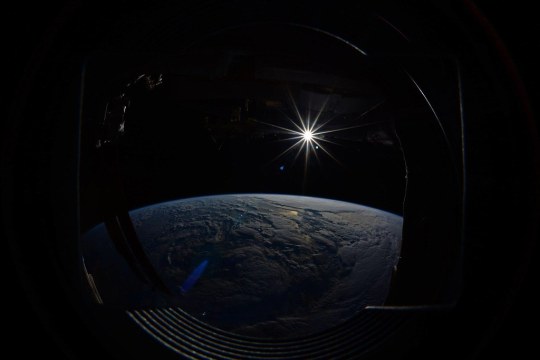
The Sun from the Internation Space Station by NASA's Marshall Space Flight Center https://flic.kr/p/XBafoT
141 notes
·
View notes
Text
Site-Wide Environmental Assessment for Marshall Space Flight Center Alabama
The National Aeronautics and Space Administration (NASA) has prepared a Draft Environmental Assessment (EA) that analyzes the environmental impacts of implementing continuing and future mission support activities at the Marshall Space Flight Center (MSFC) in Huntsville, Alabama. The EA evaluated the potential environmental effects associated with air quality; climate change and greenhouse gases; land use; […]
from NASA https://ift.tt/UM8FZuO
#NASA#space#Site-Wide Environmental Assessment for Marshall Space Flight Center#Alabama#Michael Gabrill
0 notes
Text
25 Years of Exploring the Universe with NASA's Chandra Xray Observatory

Illustration of the Chandra telescope in orbit around Earth. Credit: NASA/CXC & J. Vaughan
On July 23, 1999, the space shuttle Columbia launched into orbit carrying NASA’s Chandra X-ray Observatory. August 26 marked 25 years since Chandra released its first images.
These were the first of more than 25,000 observations Chandra has taken. This year, as NASA celebrates the 25th anniversary of this telescope and the incredible data it has provided, we’re taking a peek at some of its most memorable moments.
About the Spacecraft
The Chandra telescope system uses four specialized mirrors to observe X-ray emissions across the universe. X-rays that strike a “regular” mirror head on will be absorbed, so Chandra’s mirrors are shaped like barrels and precisely constructed. The rest of the spacecraft system provides the support structure and environment necessary for the telescope and the science instruments to work as an observatory. To provide motion to the observatory, Chandra has two different sets of thrusters. To control the temperatures of critical components, Chandra's thermal control system consists of a cooling radiator, insulators, heaters, and thermostats. Chandra's electrical power comes from its solar arrays.
Learn more about the spacecraft's components that were developed and tested at NASA’s Marshall Space Flight Center in Huntsville, Alabama. Fun fact: If the state of Colorado were as smooth as the surface of the Chandra X-ray Observatory mirrors, Pike's Peak would be less than an inch tall.

Engineers in the X-ray Calibration Facility at NASA’s Marshall Space Flight Center in Huntsville, Alabama, integrating the Chandra X-ray Observatory’s High-Resolution Camera with the mirror assembly, in this photo taken March 16, 1997. Credit: NASA
Launch
When space shuttle Columbia launched on July 23, 1999, Chandra was the heaviest and largest payload ever launched by the shuttle. Under the command of Col. Eileen Collins, Columbia lifted off the launch pad at NASA’s Kennedy Space Center in Florida. Chandra was deployed on the mission’s first day.

Reflected in the waters, space shuttle Columbia rockets into the night sky from Launch Pad 39-B on mission STS-93 from Kennedy Space Center. Credit: NASA
First Light Images
Just 34 days after launch, extraordinary first images from our Chandra X-ray Observatory were released. The image of supernova remnant Cassiopeia A traces the aftermath of a gigantic stellar explosion in such captivating detail that scientists can see evidence of what is likely the neutron star.
“We see the collision of the debris from the exploded star with the matter around it, we see shock waves rushing into interstellar space at millions of miles per hour,” said Harvey Tananbaum, founding Director of the Chandra X-ray Center at the Smithsonian Astrophysical Observatory.
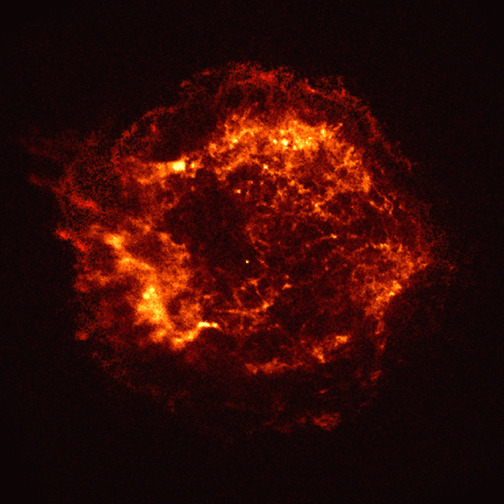
Cassiopeia A is the remnant of a star that exploded about 300 years ago. The X-ray image shows an expanding shell of hot gas produced by the explosion colored in bright orange and yellows. Credit: NASA/CXC/SAO
A New Look at the Universe
NASA released 25 never-before-seen views to celebrate the telescopes 25th anniversary. This collection contains different types of objects in space and includes a new look at Cassiopeia A. Here the supernova remnant is seen with a quarter-century worth of Chandra observations (blue) plus recent views from NASA’s James Webb Space Telescope (grey and gold).
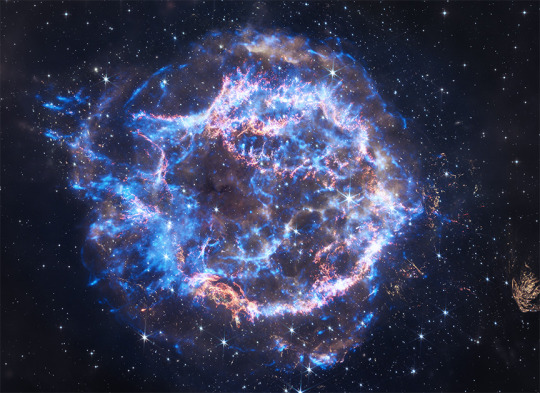
This image features deep data of the Cassiopeia A supernova, an expanding ball of matter and energy ejected from an exploding star in blues, greys and golds. The Cassiopeia A supernova remnant has been observed for over 2 million seconds since the start of Chandra’s mission in 1999 and has also recently been viewed by the James Webb Space Telescope. Credit: NASA/CXC/SAO
Can You Hear Me Now?
In 2020, experts at the Chandra X-ray Center/Smithsonian Astrophysical Observatory (SAO) and SYSTEM Sounds began the first ongoing, sustained effort at NASA to “sonify” (turn into sound) astronomical data. Data from NASA observatories such as Chandra, the Hubble Space Telescope, and the James Webb Space Telescope, has been translated into frequencies that can be heard by the human ear.
SAO Research shows that sonifications help many types of learners – especially those who are low-vision or blind -- engage with and enjoy astronomical data more.
Click to watch the “Listen to the Universe” documentary on NASA+ that explores our sonification work: Listen to the Universe | NASA+

An image of the striking croissant-shaped planetary nebula called the Cat’s Eye, with data from the Chandra X-ray Observatory and Hubble Space Telescope. NASA’s Data sonification from Chandra, Hubble and/or Webb telecopes allows us to hear data of cosmic objects. Credit: NASA/CXO/SAO
Celebrate With Us!
Dedicated teams of engineers, designers, test technicians, and analysts at Marshall Space Flight Center in Huntsville, Alabama, are celebrating with partners at the Chandra X-ray Center and elsewhere outside and across the agency for the 25th anniversary of the Chandra X-ray Observatory. Their hard work keeps the spacecraft flying, enabling Chandra’s ongoing studies of black holes, supernovae, dark matter, and more.
Chandra will continue its mission to deepen our understanding of the origin and evolution of the cosmos, helping all of us explore the Universe.
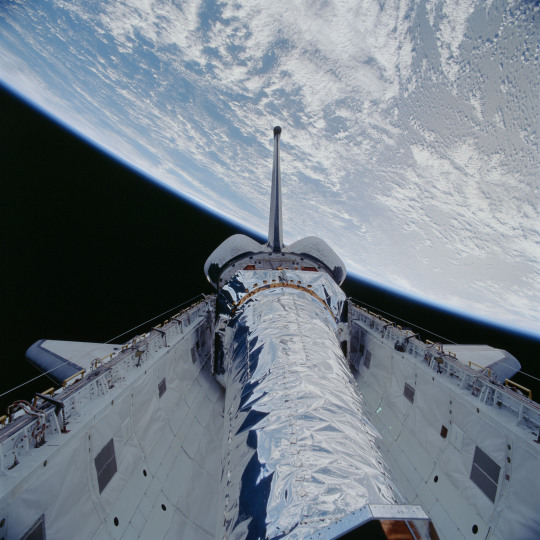
The Chandra Xray Observatory, the longest cargo ever carried to space aboard the space shuttle, is shown in Columbia’s payload bay. This photo of the payload bay with its doors open was taken just before Chandra was tilted upward for release and deployed on July 23, 1999. Credit: NASA
Make sure to follow us on Tumblr for your regular dose of space: http://nasa.tumblr.com
2K notes
·
View notes
Text

"This photograph shows F-1 engines being stored in the F-1 Engine Preparation Shop, building 4666, at the Marshall Space Flight Center. Each F-1 engine produced a thrust of 1,500,000 pounds. A cluster of five engines was mounted on the thrust structure of the S-IC stage of a 364-foot long Saturn V launch vehicle that ultimately took astronauts to the Moon."
Date: March 1965
NASA ID: 6521185
#Rocketdyne F-1#F-1#Rocket Engine#NASA#Apollo Program#Marshall Space Flight Center#MSFC#Huntsville#Alabama#March#1965#my post
111 notes
·
View notes
Photo

May 8, 1980 – Astronaut Anna Fisher suited up for training in the Neutral Buoyancy Simulator at Marshall Space Flight Center in Alabama. (NASA)
2K notes
·
View notes
Video
Apollo 11 Launches! by NASA's Marshall Space Flight Center
Via Flickr:
55 years ago, on July 16, 1969, the Apollo 11 mission lifted off from Launch Pad 39A at the Kennedy Space Center on it's historic trip to the Moon, where Neil A. Armstrong and Edwin E. "Buzz" Aldrin would be the first humans to step onto the surface of the Moon. Image credit: NASA #NASA #NASAMarshall #Apollo #Apollo11 #SaturnV #rocket #Moon #space Read more More about Apollo 11 NASA Media Usage Guidelines
6 notes
·
View notes
Text
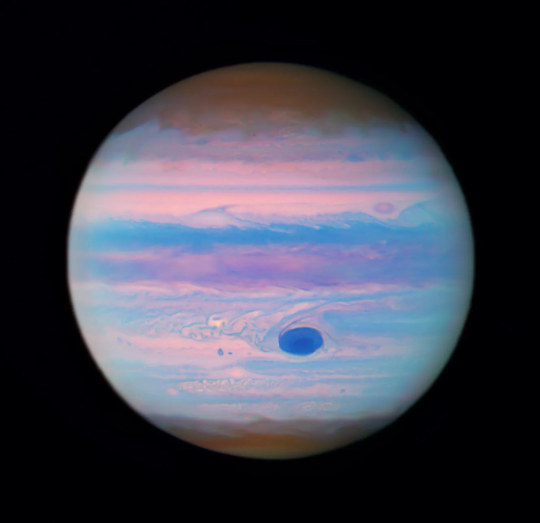
Hubble Provides Unique Ultraviolet View of Jupiter by NASA's Marshall Space Flight Center
3K notes
·
View notes
Video
Cays of the Bahamas by NASA's Marshall Space Flight Center
Via Flickr:
(From left) Culmer's Cay, Glass Cay, Tommy Young's Cay, Davy Cay, Hog Cay, and Green Turtle Cay—islands off the mainland Great Abaco in the Bahamas— appear like jigsaw puzzle pieces as the bright teals and blues of the Atlantic Ocean flow and swirl between the land. The International Space Station orbited 259 miles above as this photograph was taken. Image Credit: NASA #NASA #NASAMarshall #ISS #InternationalSpaceStation #Earth #bahamas Read more More about the International Space Station NASA Media Usage Guidelines
1 note
·
View note


